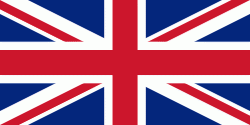East Keswick (East Keswick)
East Keswick is a village and civil parish in the City of Leeds metropolitan borough, West Yorkshire, England. It lies four miles south west of Wetherby. The population of the civil parish as of the 2011 census was 1,146.
The name of East Keswick is first attested in the Domesday Book of 1086, in the forms Chesinc and Chesing. This name comes from the Old English words cēse ('cheese') and wīc ('dwelling, specialised farm'), and thus once meant 'farm specialising in cheese production'. The ch- spelling in the Domesday Book reflects the usual Old English pronunciation (also found in modern English cheese). Subsequent attestations, however, reflect the modern pronunciation [-], the earliest being Keswic and Keswich. This reflects the influence of Old Norse pronunciation on the local language.
The additional element East is first attested in twelfth-century forms such as Estkeswyck. It seems to have been added to distinguish the villages from other places called Keswick, such as the nearby Dunkeswick.
The name of East Keswick is first attested in the Domesday Book of 1086, in the forms Chesinc and Chesing. This name comes from the Old English words cēse ('cheese') and wīc ('dwelling, specialised farm'), and thus once meant 'farm specialising in cheese production'. The ch- spelling in the Domesday Book reflects the usual Old English pronunciation (also found in modern English cheese). Subsequent attestations, however, reflect the modern pronunciation [-], the earliest being Keswic and Keswich. This reflects the influence of Old Norse pronunciation on the local language.
The additional element East is first attested in twelfth-century forms such as Estkeswyck. It seems to have been added to distinguish the villages from other places called Keswick, such as the nearby Dunkeswick.
Map - East Keswick (East Keswick)
Map
Country - United_Kingdom
 |
 |
| Flag of the United Kingdom | |
The United Kingdom has evolved from a series of annexations, unions and separations of constituent countries over several hundred years. The Treaty of Union between the Kingdom of England (which included Wales, annexed in 1542) and the Kingdom of Scotland in 1707 formed the Kingdom of Great Britain. Its union in 1801 with the Kingdom of Ireland created the United Kingdom of Great Britain and Ireland. Most of Ireland seceded from the UK in 1922, leaving the present United Kingdom of Great Britain and Northern Ireland, which formally adopted that name in 1927. The nearby Isle of Man, Guernsey and Jersey are not part of the UK, being Crown Dependencies with the British Government responsible for defence and international representation. There are also 14 British Overseas Territories, the last remnants of the British Empire which, at its height in the 1920s, encompassed almost a quarter of the world's landmass and a third of the world's population, and was the largest empire in history. British influence can be observed in the language, culture and the legal and political systems of many of its former colonies.
Currency / Language
| ISO | Currency | Symbol | Significant figures |
|---|---|---|---|
| GBP | Pound sterling | £ | 2 |
| ISO | Language |
|---|---|
| EN | English language |
| GD | Gaelic language |
| CY | Welsh language |















